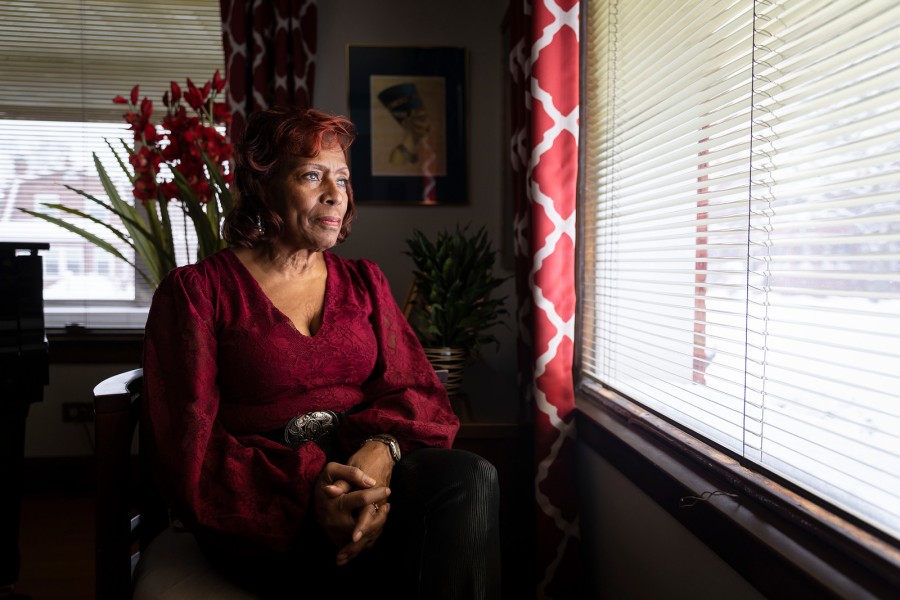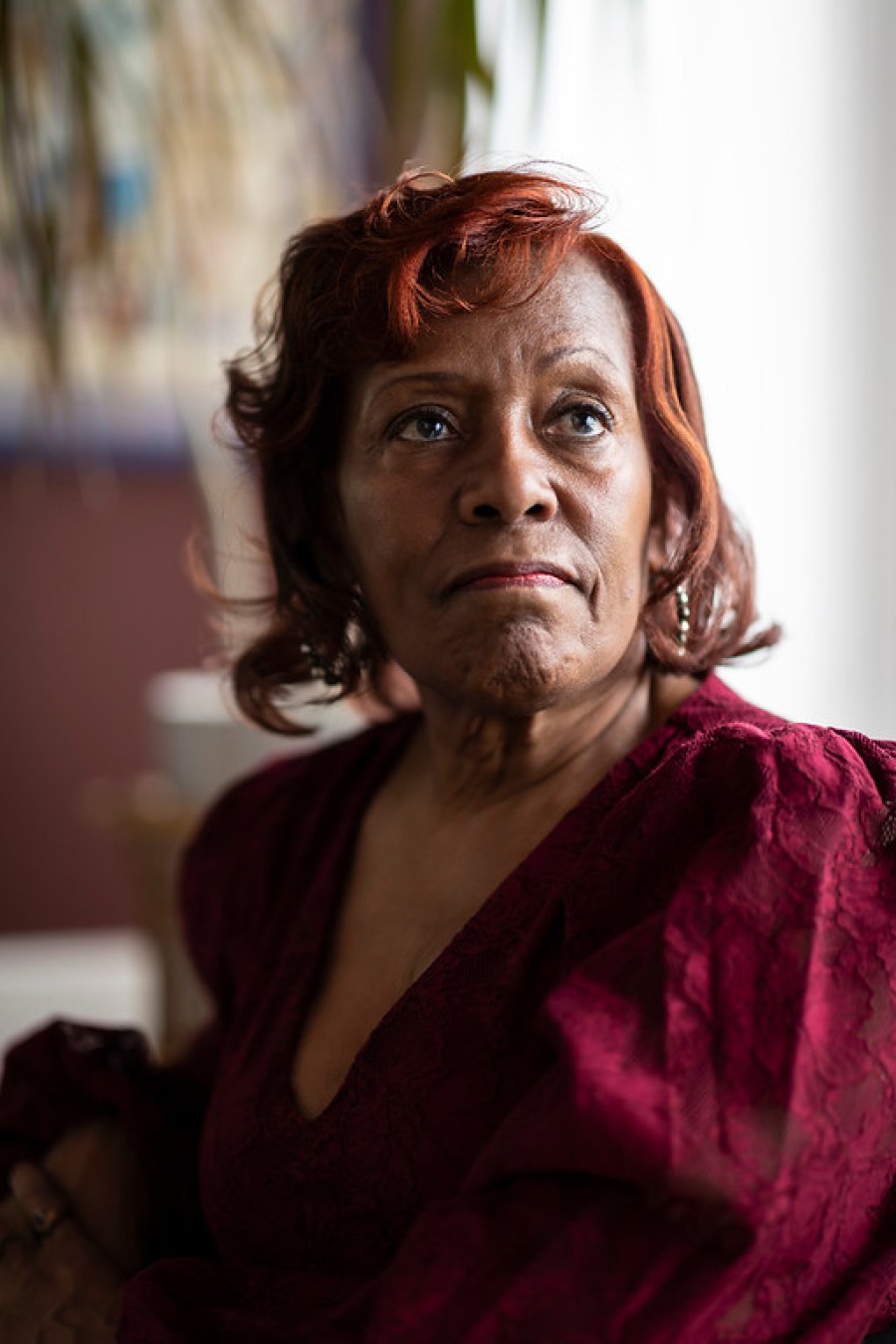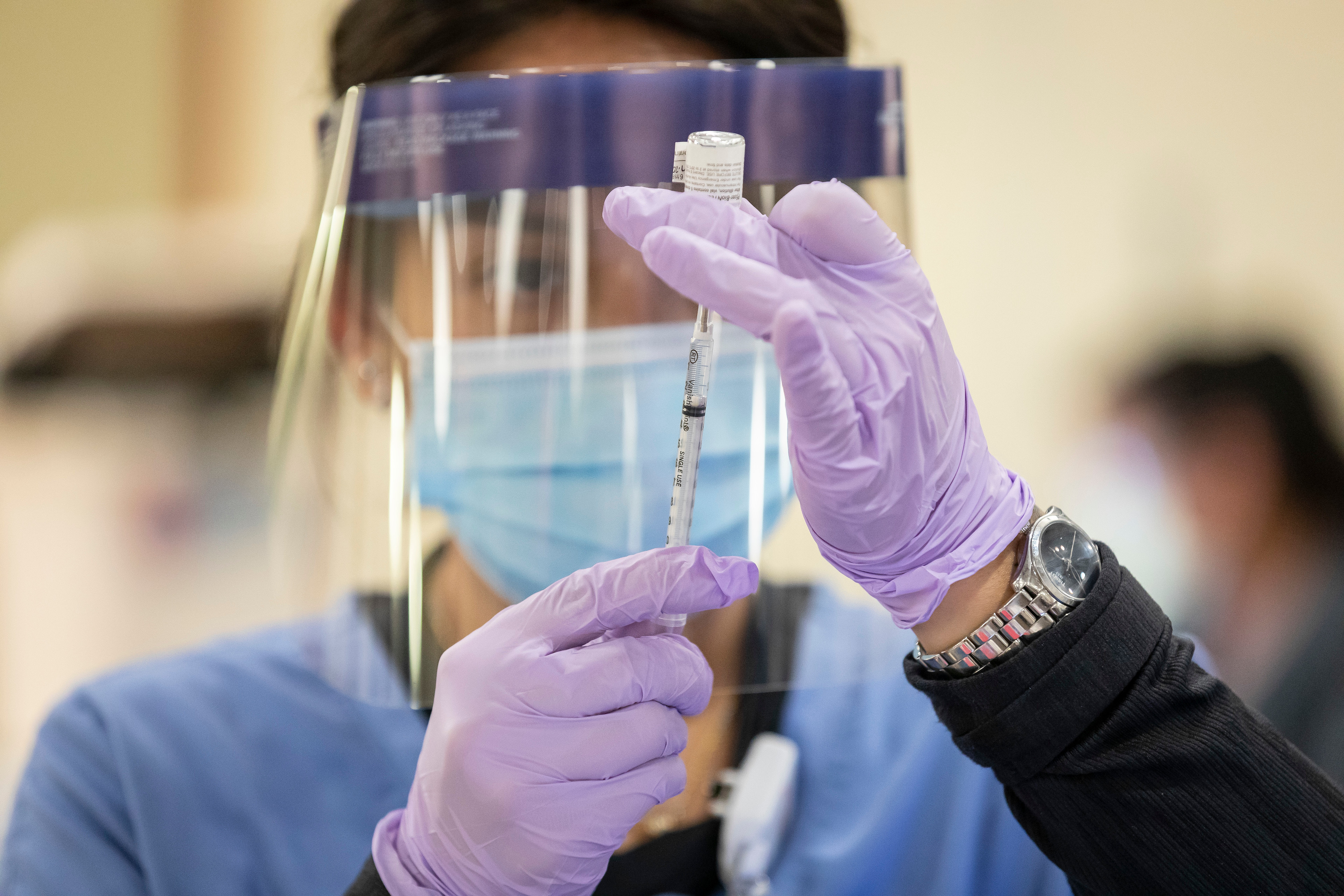
This story is supported by the Pulitzer Center.
This is what Marie Collins-Wright repeatedly encountered as she scoured the web for a COVID-19 vaccine appointment for herself and her mom.
“You get this big message: No appointments. No appointments. No appointments. No appointments,” said Collins-Wright, 66.
Collins-Wright lives in South Deering on Chicago’s Far South Side, where only 1% of the community has been fully vaccinated. She was willing to drive all over the state for a shot. But, she couldn’t find one after trying multiple pharmacies, hospitals and even a large vaccine event in the suburbs.
“I’m just at a loss at where I’m going to get this shot,” Collins-Wright said. “Every day, every night, I’m up 12, 1 o’clock, on my computer. I’m looking at these people on the news, they’re coming from outside of the city … to get the shot.”
She eventually got a shot through Cook County.
Booking an appointment for a COVID-19 vaccine has been incredibly hard and frustrating. It’s taken many people days and weeks to find a slot. Some people were referred back and forth between their family physicians and the hospitals they’re affiliated with. Neither are vaccinating patients.
Multiple national surveys have shown that a significant number of Black Americans are hesitant to take the vaccine, given decades of mistrust, racism and medical abuse.
But access to getting the vaccine is also a major issue. For Black Chicagoans, finding medical care was difficult well before COVID-19 struck. Many hospitals in Black communities are starved for resources, and some residents live in what are essentially pharmacy deserts.
Now that it’s time to start getting COVID-19 vaccines, people are finding they need computer skills and time to navigate multiple pharmacy websites to book an appointment. That can be hard for elderly residents and hourly workers.
And for those who don’t have health insurance, or have Medicaid insurance for low-income and disabled residents, the path to a shot is even harder.
Another hurdle: Your primary care doctor doesn’t have the vaccine
The message from public health officials for people who are eligible for a vaccine is to first contact their primary care physicians. These family doctors already give all types of vaccines, such as annual flu shots, and they’ve typically built up years of trust with patients. Primary care doctors are often the starting point for when someone gets sick, or, in the case of COVID-19, easing their concerns about the vaccine.
But the vaccine efforts have largely left many of those physicians out of the loop. In some cases, the logistics of having to store vials of vaccine in ultra-cold freezers, and the dizzying amount of reporting to the government needed to administer COVID-19 vaccine, is too much for some physicians.
Even for primary care doctors who are ready and want to vaccinate their patients, there’s another hurdle — they don’t have any vaccine to give.
Dr. Scott Levin, a family physician with West Suburban Medical Center in Oak Park, said he doesn’t have an answer for his patients when they ask why they can’t get vaccinated during visits and where they can go. About half of Levin’s patients are Black and about one-third have Medicaid health insurance. Many are from Chicago’s Austin neighborhood across the street.
“I see the look in their face: ‘How could you not know where I’m supposed to get the vaccine?’ ” Levin said.
A spokeswoman for West Suburban confirmed the hospital is not vaccinating patients because there isn’t enough supply.
Many Black men don’t even have a primary care physician, making it harder to reach this population to get the COVID-19 vaccine, said Dr. Edwin McDonald at the University of Chicago Medical Center in Hyde Park.
“Even though I’m a gastroenterologist, I can’t even tell you how many people that I serve as a primary care doctor for, specifically Black men,” McDonald said. “A lot of people that I see, for a colonoscopy or something, they just don’t have someone taking care of them.”
To put patients at ease, whether it’s about a high blood pressure medication or the COVID-19 vaccine, McDonald said he relays his own experiences navigating racism as a Black man. And he underscores who COVID-19 has disproportionately infected and killed: African American and Latino residents.
“The majority of people unfortunately, especially here on the South Side, have been touched by the virus,” McDonald said.
“Falling woefully behind” in vaccinating people of color
It’s difficult to assess just how fair the vaccine rollout has been in Chicago and more broadly in Illinois.
There’s no complete list of all the locations where people can get a shot, so it’s hard to say just how many vaccination sites are in Black and brown communities compared to white communities. State and Chicago public health officials won’t say how many doses are going to each vaccination site.
But some Illinois public health data shows that across the state, white residents have so far received a disproportionate number of vaccines. Public officials and health leaders say they’re well aware of the disparities.
“Our city is two-thirds people of color, and yet we are falling woefully behind in the number of people of color who have been vaccinated to date,” Chicago Mayor Lori Lightfoot said in January. “Those are numbers that simply cannot stand.”
To tackle the inequity, the city has launched an ambitious plan to saturate 15 neighborhoods hardest hit by COVID-19 with vaccine. Anyone who lives there can get a shot — not just those who are eligible, like seniors and some essential workers.
There are encouraging signs that more Black and Latino Chicagoans are getting vaccinated. While half of vaccines went to white Chicagoans by late January, by Feb. 13, residents who had received their first doses were 41% white, 19% Black, 18% Latino and 7% Asian, according to the Chicago Department of Public Health.
But there is still a long way to go.
Chicago ZIP codes with the most residents receiving their first dose of the vaccine — topping out at nearly 40% of their population — are downtown. Those ZIP codes with the fewest residents getting that first shot are concentrated on the South, West and Northwest sides, according to a WBEZ analysis. In about two dozen of those communities, the percent of the population that has received a first dose is in the single digits.
There are other efforts underway to get more vaccine into Black and brown communities. Churches are partnering with clinics to host weekend vaccination events, while some physicians are immunizing elderly residents in senior centers.
“I was determined to do this”
Loraine Woods-Lewis, 72, preaches persistence. The Chatham resident said it took at least two weeks to book appointments for herself and her husband after spending hours on her computer, searching various government and pharmacy websites. She called around asking others how they were able to get a shot, hoping for tips.

“I was determined to do this,” Woods-Lewis said. “Once I make up my mind about doing something, I succeed.”
In Chatham, just 2% of the community has been fully vaccinated. Woods-Lewis noted that unlike some others with limited time, she was able to spend a few hours a day online to get those appointments. She said it was like “winning the lottery” when she finally scored two spots.
Others have benefited from their strong neighborhood ties. Theresa Wilson, 76, who lives on the Southeast Side, tried a few pharmacies with no luck. Her primary care doctor’s office and her local hospital referred her to each other.
“That’s where I was with that, caught in between,” Wilson said.
In the end, it was her own community that stepped up. She secured her shot through her neighborhood block club. She was even notified in the most personal of ways — a phone call from her club’s phone tree.
“It was a relief because I hadn’t even thought of block club,” Wilson said. “That never did even cross my mind.”
Kristen Schorsch covers public health on WBEZ’s government and politics desk. Follow her @kschorsch. WBEZ City Hall reporter Becky Vevea contributed.
COVID-19 Update: The connection between local and global issues–the Pulitzer Center's long standing mantra–has, sadly, never been more evident. We are uniquely positioned to serve the journalists, news media organizations, schools, and universities we partner with by continuing to advance our core mission: enabling great journalism and education about underreported and systemic issues that resonate now–and continue to have relevance in times ahead. We believe that this is a moment for decisive action. Learn more about the steps we are taking.










